A particle of mass m is released from rest from a point A of a wedge of mass 4m free to slide on a frictionless horizontal plane.The particle slides down the smooth face AB of the wedge.When the velocity of the wedge is 0.2m/s the velocity of the particle in m/s relative to the wedge is qquad 2m/s<(1)/(4) .
Step by step video & image solution for A particle of mass m is released from rest from a point A of a wedge of mass 4m free to slide on a frictionless horizontal plane.The particle slides down the smooth face AB of the wedge.When the velocity of the wedge is 0.2m/s the velocity of the particle in m/s relative to the wedge is qquad 2m/s<(1)/(4) . by Physics experts to help you in doubts & scoring excellent marks in Class 11 exams.
Similar Questions
A particle of mass m=0.1kg is released from.rest from a point A of a wedge of mass M=2.4kg. The wedge is free to slide on a frictionless horizontal plane. The particle slides down the smooth face AB of the wedge. When the velocity of the wedge is 0.2ms, the velocity (in ms ) of the particle relative to the wedge is
'(##CEN_KSR_PHY_JEE_C08_E01_013_Q08##)'View SolutionA block of mass m is placed at rest on a smooth wedge of mass M placed at rest on a smooth horizontal surface. As the system is released
 View Solution
View Solution
Knowledge Check
- Question 1 - Select One
A particle mass m=0.1kg is released from rest from a point A of a wedge of mass M=2.4kg free to slide on a frictionless horizontal plane. The particle slides down the smooth face Ab of the wedge. When the velocity of th ewedge is 0.2m/s the particle in m/s relative to the wedge is :-
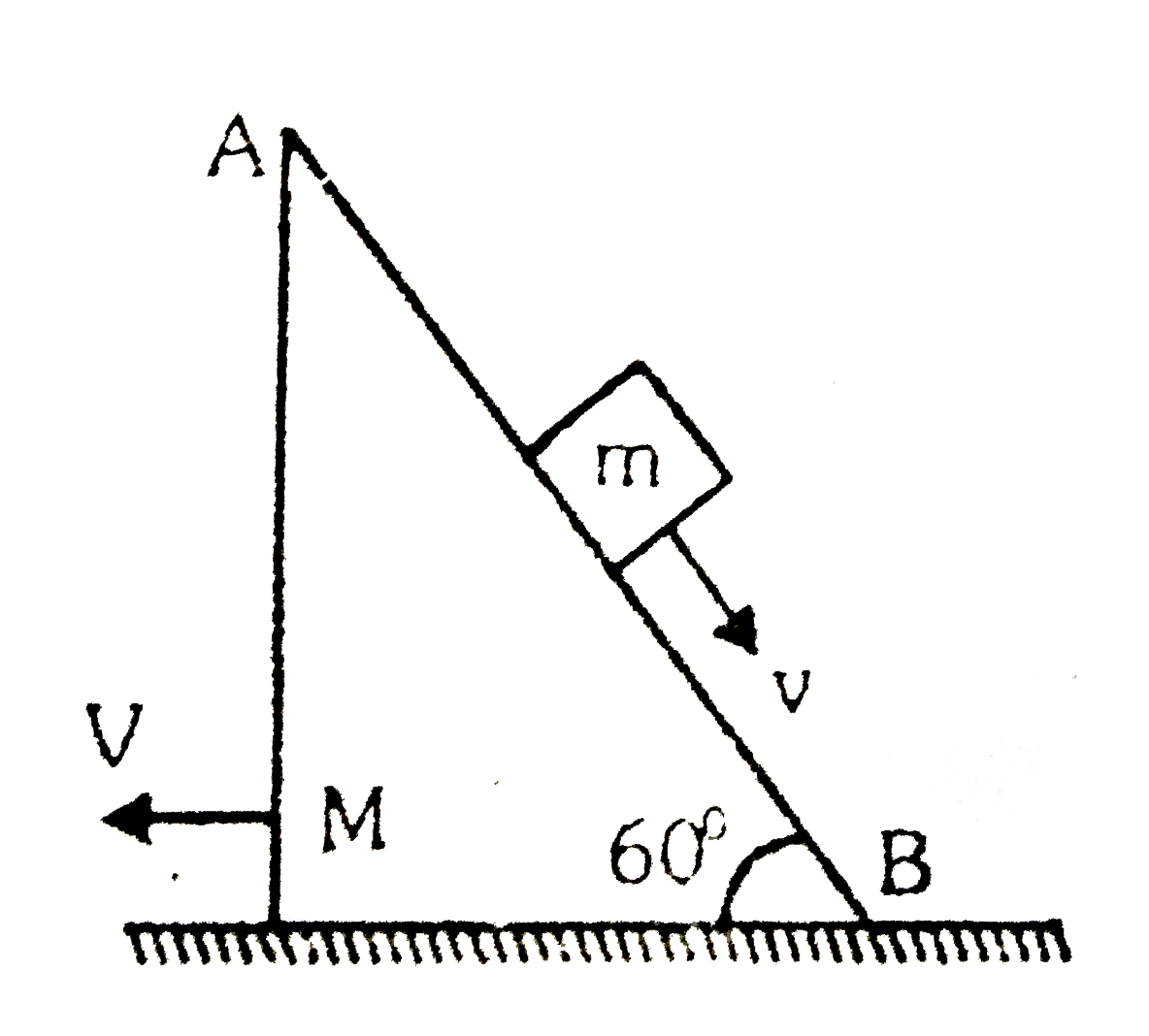 A4.8B5C7.5D10
A4.8B5C7.5D10 - Question 2 - Select One
A small ball ( uniform solid sphere ) of mass m is released from the top of a wedge of the same mass m. The wedge is free to move on a smooth horizontal surface. The ball rolld without sliding on the wedge. The required height of the wedge are mentioned in the figure.

The total kinetic energy of the ball just before it falls on the groundA2mghBmghC1318mghDNone of these - Question 3 - Select One
A small ball ( uniform solid sphere ) of mass m is released from the top of a wedge of the same mass m. The wedge is free to move on a smooth horizontal surface. The ball rolld without sliding on the wedge. The required height of the wedge are mentioned in the figure.
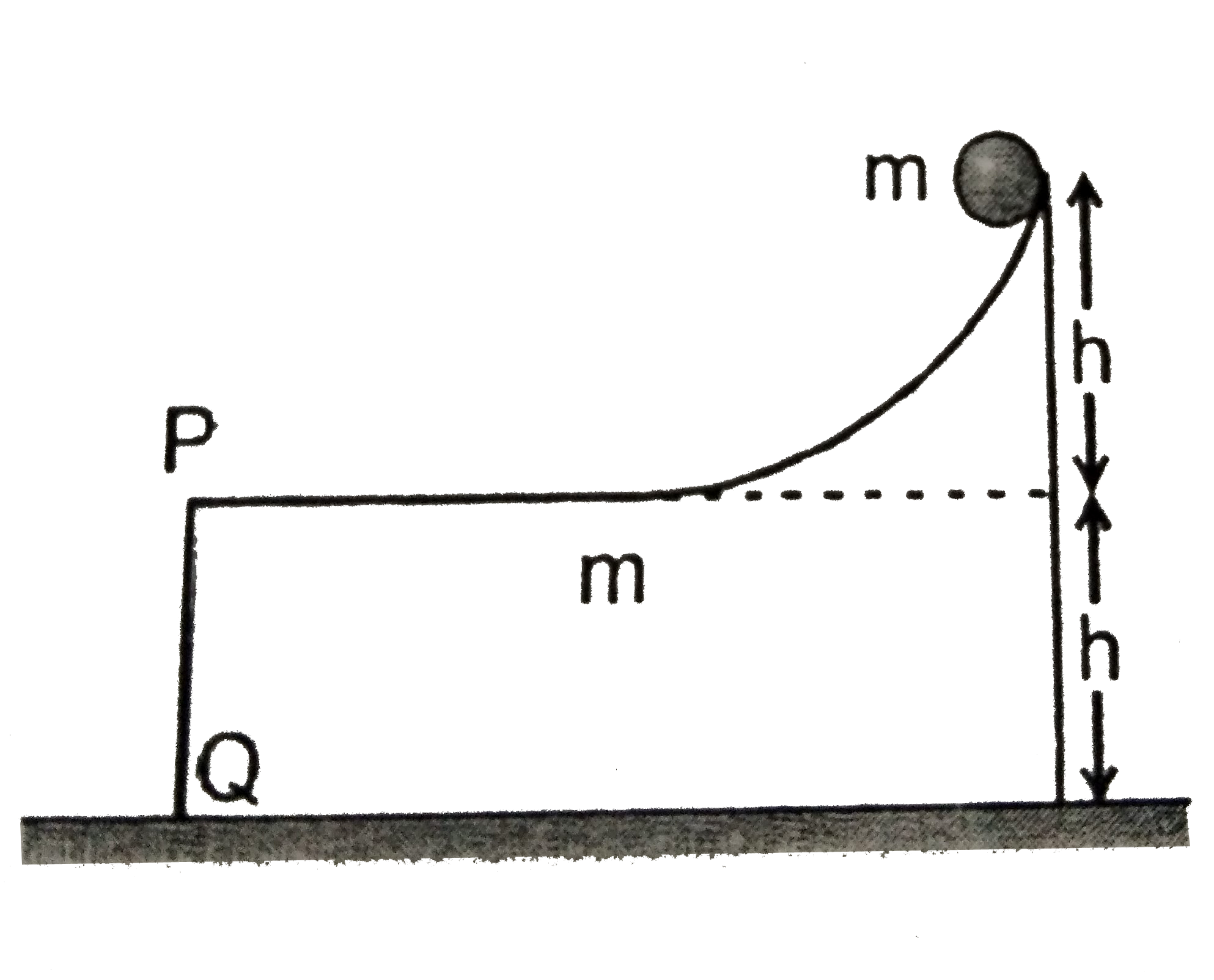
The speed of the wedge when the ball is just going to leave the wedge at point 'P' of the wedge isA√5gh9B√ghC√5gh6DNone of these
A particle of mass m strikes normally to a stationary wedge of mass 5m kept on the smooth horizontal surface as shown.If the particle sticks to the wedge then loss in kinetic energy of the system during collision is?
View SolutionA wedge of mass M rests with one face in contact with horizontal , smooth surface . A particle of mass m is placed on the smooth face on it , inclined at an angle αto the horizontal and released . Find the velocity of the wedge and that of the particle relative to the wedge when the particle has slipped a distance x down the face of the wedge . Also calculate the acceleration of the wedge and that of the particle relative to the wedge and the smooth surface .
[Hint : Apply principal of conservation of momentum along the horizontal and energy conservation principle . See Example 8 )View SolutionA particle of mass m is placed at rest on the top of a smooth wedge of mass M, which in turn is placed at rest on a smooth horizontal surface as shown in figure. Then the distance moved by the wedge as the particle reaches the foot of the wedge is :
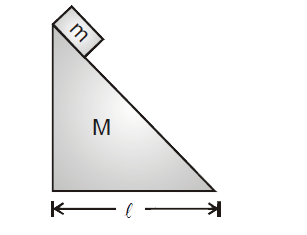 View Solution
View SolutionA block of mass 2kg slides down the face of a smooth 45∘ wedge of mass 9kg as shown in the figure. The wedge is placed on a frictionless horizontal surface. Determine the acceleration of the wedge.
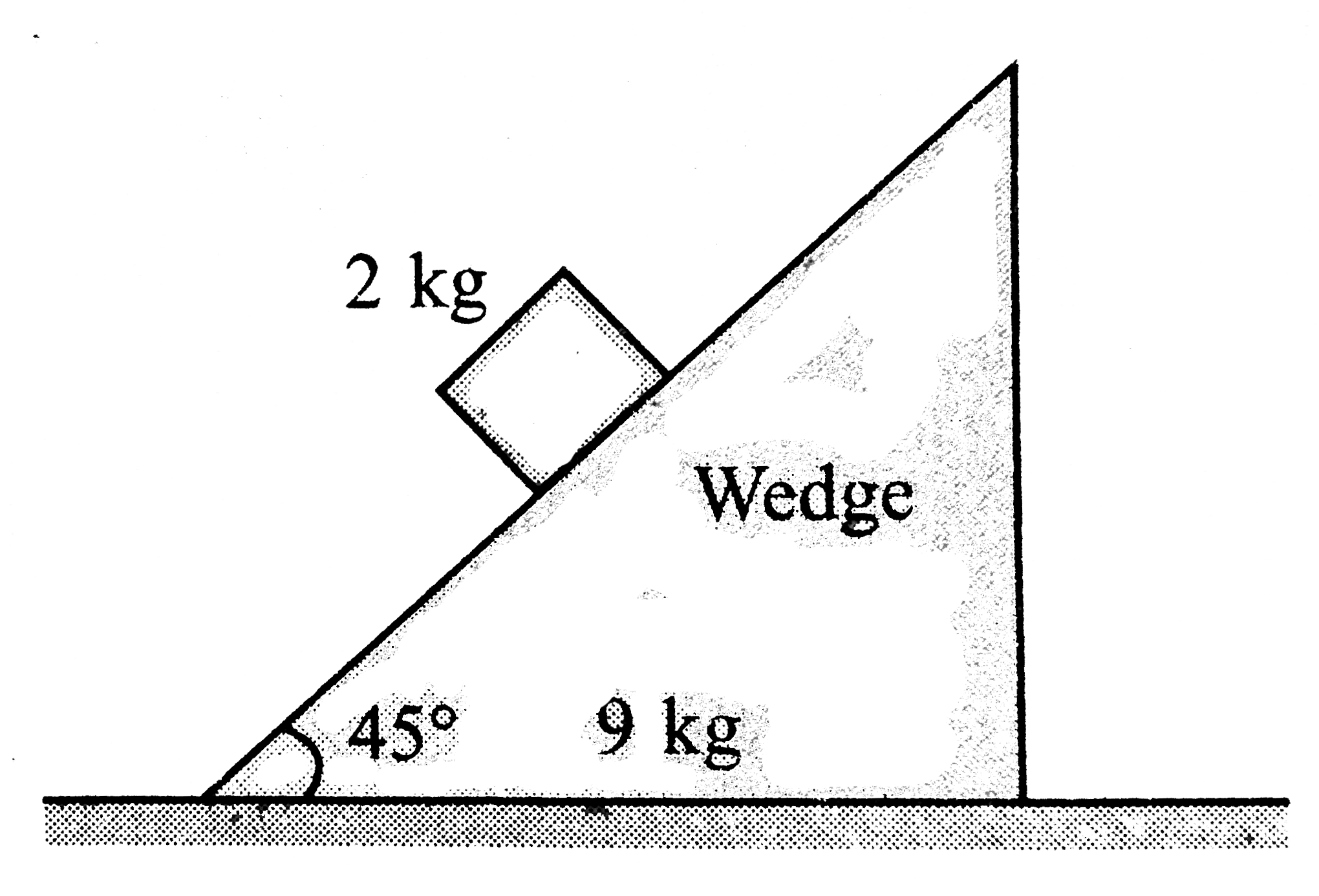 View Solution
View SolutionA small block of mass m1 is released from rest at the top of a curve-shaped, frictionless wedge of mass m2 which sits on a frictionless horizontal surface as shown. When the block leaves the wedge its velocity is measured to be 4.00 m/s to the right as shown in the figure. if the mass of the block is doubled to becomes 2m1, what can be said about the speed with which it leaves the wedge ?
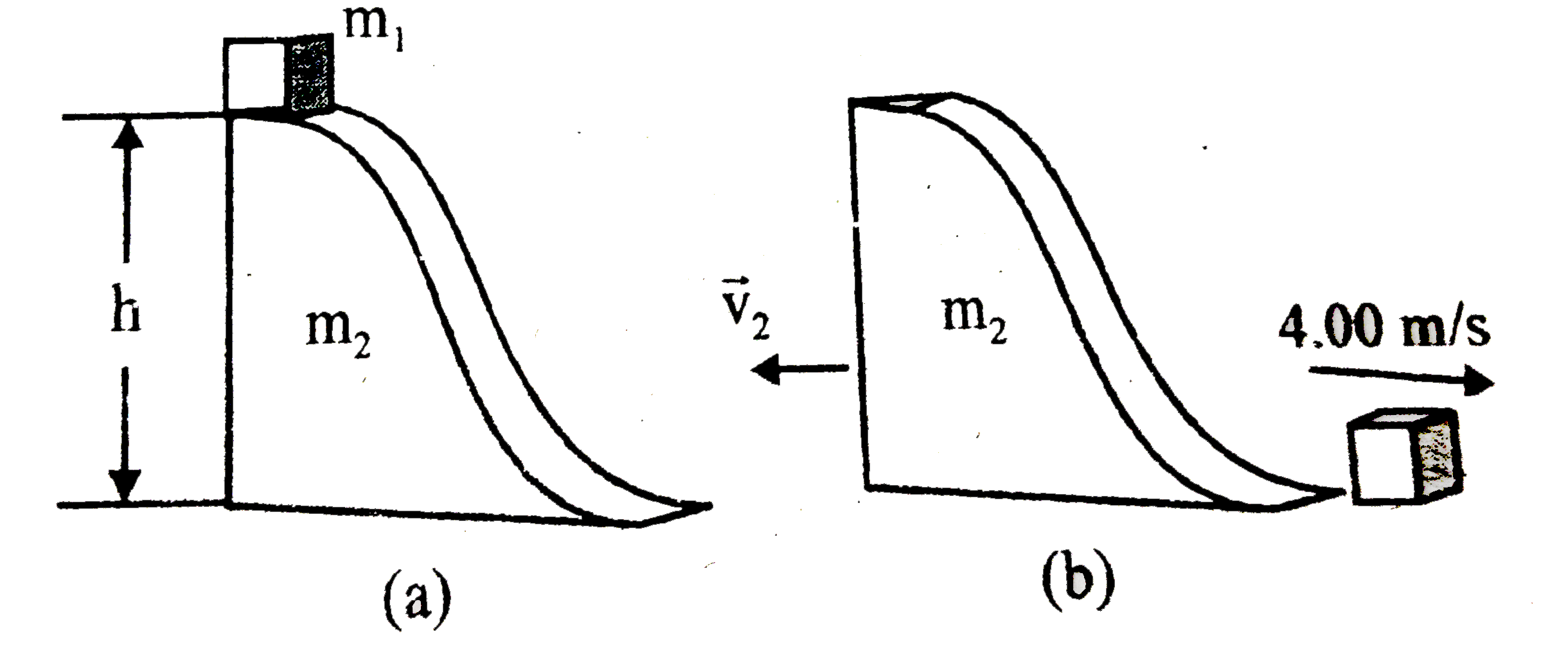 View Solution
View Solution
